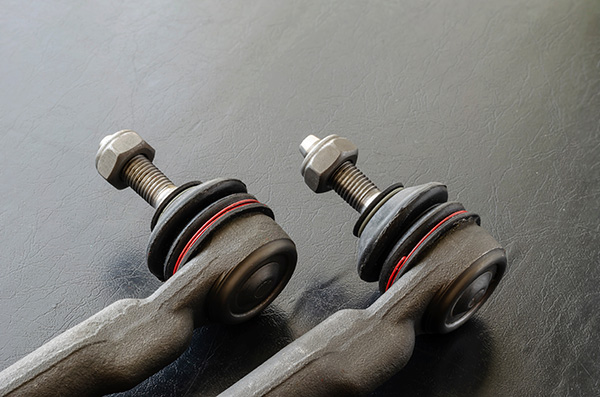
When it comes to understanding how your car's steering system works, the tie rod is an essential component that often goes unnoticed. But what exactly is a tie rod, and how does it contribute to the smooth steering of your vehicle? We'll explain the role of tie rods in your car's steering mechanism and why keeping them in good condition is vital for your safety and driving comfort.
Steering Tie Rods
Tie rods are a fundamental part of your vehicle's steering system. They connect the steering gear, or rack and pinion, to the steering knuckle, allowing your wheels to turn when you rotate the steering wheel. Essentially, tie rods act as a bridge, transferring the motion and force from the steering gear to the wheels, enabling precise control over your vehicle's direction.
How Tie Rods Work
The function of tie rods can be broken down into a few key steps. When you turn your steering wheel, the steering gear moves, pushing or pulling the tie rods. These rods, in turn, move the steering knuckles, which causes the wheels to pivot and change the car's direction. There are typically two tie rods in a vehicle: an inner tie rod and an outer tie rod, both working together to ensure accurate steering.
Inner tie rods are connected to the steering rack and are protected by a rubber boot that helps keep dirt and debris out. The outer tie rods connect to the steering knuckle on the wheel. Both parts have ball joints that allow them to move smoothly and flexibly as the steering wheel is turned.
Why Tie Rods Are Important
Tie rods play a critical role in maintaining your car's alignment and ensuring that your wheels turn properly. Without fully functioning tie rods, your vehicle's ability to steer accurately would be compromised. This could lead to unsafe driving conditions, as the wheels might not respond correctly to your steering inputs.
Moreover, tie rods are integral to the overall alignment of your car. Misaligned tie rods can cause uneven tire wear, leading to premature tire replacement and reduced fuel efficiency. Keeping your tie rods in good shape helps preserve your tires and improve your car's handling and stability.
Signs of Worn Tie Rods
Like any other component in your vehicle, tie rods can wear out over time. Recognizing the signs of worn or damaged tie rods is crucial for maintaining your car's steering performance and safety. Here are some common symptoms to watch for:
- Uneven Tire Wear: If you notice that your tires are wearing unevenly or more quickly on one side, it could be a sign that your tie rods are not holding the alignment correctly.
- Steering Wheel Vibration: A vibrating steering wheel, especially when turning or accelerating, can indicate loose or worn tie rods.
- Unresponsive Steering: If your steering feels loose or less responsive, it might be due to worn tie rods not providing the necessary control.
- Clunking Noises: Unusual noises coming from the front of your vehicle when turning or driving over bumps could signal that your tie rods need attention.
Maintaining and Replacing Tie Rods
Regular maintenance of your vehicle's steering system, including tie rods, is essential to ensure a safe and smooth driving experience. During routine inspections, technicians will check the condition of your tie rods and look for any signs of wear or damage. If a tie rod is found to be faulty, it should be replaced immediately to prevent further issues.
Replacing tie rods is a task best left to professional technicians. The process involves removing the old tie rod and installing a new one, followed by a precise alignment of your vehicle's wheels. Proper alignment is critical to ensure that your car handles well and that your tires wear evenly.
Don't ignore the signs of worn tie rods. Visit Auto Masters Repair for expert maintenance and keep your car steering straight.